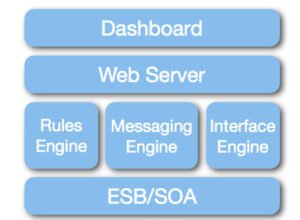HAIs (hospital acquired infections) are the cause of 1.7 million infections and 100,000 deaths per year in U.S.
HAIs (hospital acquired infections) are the cause of 1.7 million infections and 100,000 deaths per year in U.S. hospitals. While the majority of these infections can be prevented through basic practices such as good hand-washing and aseptic techniques, the unfortunate reality is that many hospitals and administrators are reluctant to disclose or report negative information concerning HAIs, hindering the ability of all healthcare facilities to work together on a national level to analyze the problem and develop an effective preventative strategy.
This problem was addressed by Don Wright, M.D., M.P.H., Deputy Assistant Secretary for Healthcare Quality at the U.S. Dept. of Health and Human Services, in a compelling keynote at the Cleveland Clinical Health Care Quality Innovation Summit. This summit, and Dr. Wright’s speech, left us feeling that while there may be difficult mountains to climb, there are always paths to get to the top when we have the knowledge that we’re not alone in our journey.
Communication between all types of healthcare facilities is one path to prevent hospital system failures, specifically HAIs, emphasized by Dr. Wright. He stressed that their common mission should be to save lives, not point fingers. Hospitals should also eagerly follow the examples of other facilities (showcased on websites like LeapFrog and National Quality Forum), according to Dr. Wright.
While it takes a concerted effort within health care facilities to make a dent in the number of HAIs, bioscience companies also have an important role to play. nanoMR and River Diagnostics, two of our clients, are examples of companies that have led the way in the creation of time and cost effective test systems that rapidly detect pathogens from a variety of sources. These innovative systems may, in turn, help to decrease HAIs, prevent unnecessary complications and hospital re-admissions, and – ultimately – lead to safer hospital environments for patients.
At nanoMR, research has been directed toward the development of a unique pathogen capture system designed to identify the pathogens that cause bloodstream infections at 1 CFU/mL (colony forming unit). With a high efficiency rate, the nanoMR Pathogen Capture System produces PCR-ready bacterial DNA in less than an hour. Furthermore, while product development thus far has been focused on blood-borne pathogens, the technology can also be applied to a variety of biological samples (for instance, surface swabs, blood, or urine samples), as well as a variety of targets (e.g., molecular species, bacteria, eukaryote cells, or cancer cells).
River Diagnostics, on the other hand, uses an optical technology called Raman spectroscopy to perform detailed analysis of cells and tissues. Using a non-destructive technique that involves the scattering of light molecules, experts are able to classify and characterize complex biological samples in a matter of seconds. River has developed two interesting technologies, the Model 3510 Skin Composition Analyzer and the SpectraCell RA ® Bacterial Strain Analyzer. The latter, in particular, has been described as “essential” in combating HAIs by tracing the sources of food-borne pathogen outbreaks.
Do you have any insights into institutions that are excelling at reducing HAIs? What about bioscience companies developing technologies that may make a difference? Are there safety models outside of health care that we should emulate? Please share your thoughts below. One good idea can save a million lives.








